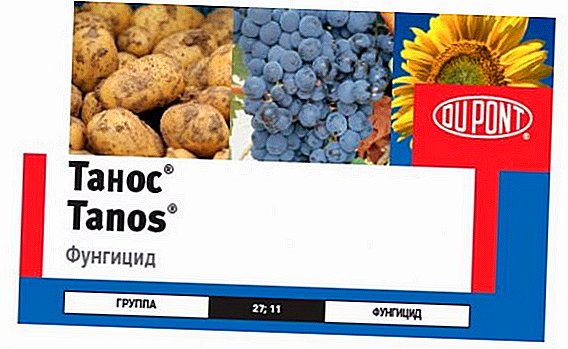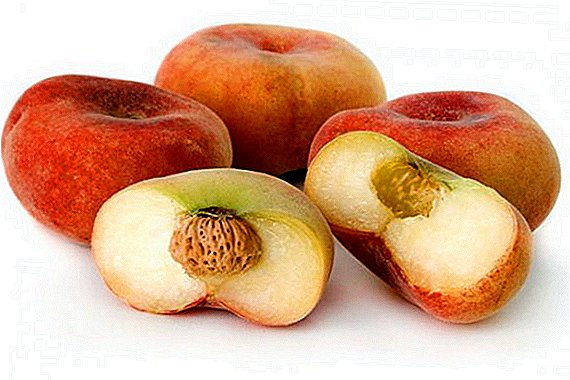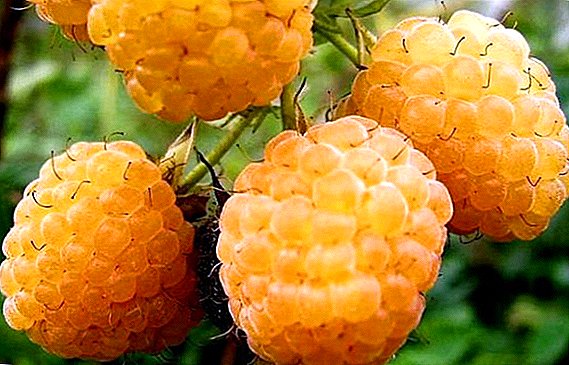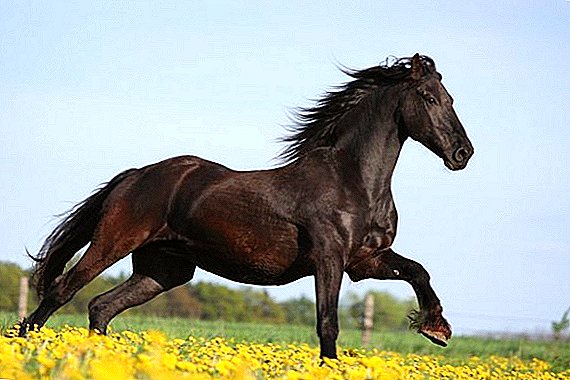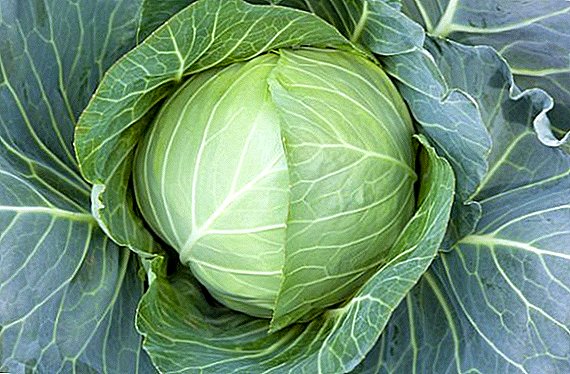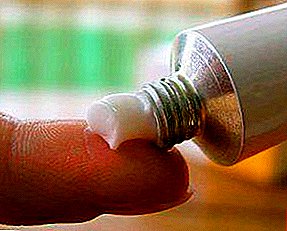 Russians, and not only them, love to eat mushroom dishes.
Russians, and not only them, love to eat mushroom dishes.
In central Russia there are all conditions for this, one of which is to be able to distinguish edible mushrooms from inedible ones.
For this it is worth getting to know them better.
Edible Mushrooms
There are a lot of them in central Russia. The characteristic features of the most common of them are presented to your attention below.
White mushroom
Cep is also called boletus or just white, and in Latin Boletus edulis. 
Hat it sometimes reaches half a meter in diameter, although the usual size ranges from 7 to 30 cm. Depending on the season and climatic conditions, it can change a smooth surface to wrinkled, bare to resemble thin felt or fibrous with scales, mucous to matt dry or radiant.
Colour not necessarily white - there are brown-red, yellow (lemon), purple and orange shades, and unevenly distributed - the edges of the cap are lighter and sometimes have a rim that gives yellow or completely white.
Did you know? There are still at least two dozen names of white fungus used in various Russian regions. Most curious - wood grouse, ladybird, bear, pan, truthful and, finally, expensive mushroom. This, perhaps, somehow reflects the fact that the famous Soviet mycologist B.P. Vasilkov managed, as a result of many years of research, to classify 18 species of white fungus, combining them into a single wide biological species.

A white, juicy, strong flesh hides beneath the skin that has grown almost tightly. In age-related fungi, it gradually turns yellow. If the hat surface is dark, then directly below it there may be a brownish or brown-red layer. While the mushroom is raw, its fleshy flesh hardly smells.
Leg the boletus is very massive - sometimes the thickness can be more than 10 cm, although usually it does not exceed 7 cm. The standard is a height of 12 cm, but sometimes less (up to 8 cm), and more (up to 25).
Learn also about the beneficial properties of white mushrooms, how to distinguish a false white mushroom, how to prepare white mushrooms for the winter, how to freeze white mushrooms.
The shape of the young legs resembles a barrel, and in another case - a mace. Age-related changes give it the appearance of a cylinder with a still thickened base.
Forest tracts with different composition of tree species are the places of boronik growing, but mainly mushroom fields appear in:
- birch groves;
- oak woods;
- fir grove;
- pine forests.

At the same time, mushroom pickers prefer to look for “white” prey in mixed (spruce-birch) thickets - growing there, it turns out to be the most delicious.
Important! In no case can you make a mistake by placing in the basket, along with the real white copies of their twin, called bitter because of the bitterness it spreads, which can ruin the entire batch during cooking.
Growing individually or in small groups, white mushrooms are massively harvested from mid-August to mid-September, preferring those that have a hat diameter not exceeding 10 cm. There are more worms among the age-related samples, which requires additional processing.
Culinary use of white mushrooms covers the whole possible range, they are used:
- fresh
- boiled;
- fried;
- salty;
- pickled;
- dried

For billet the most preferred method is drying.
Real bum
Named hereby, this mushroom has other names: white salmon, raw salmon, wet salmon, Pravskian salmon. The modern scientific term for its designation is Lactarius resimus.
Gruzdevaya a hat It has a dense structure, in the process of growth it changes its flat-convex configuration to the shape of a funnel, in which the pubescent edges are wrapped. The diametral size ranges from 5 to 20 cm.
Find out what types of fungus there are, how to distinguish an aspen wood, and how black it is, what useful mushrooms are.
The hat coating (skin) is wet-mucous, has indistinct circular watery spots, the color can be either pale yellow or milky.
The smooth and hollow cylinder of the leg has parameters (height / diameter) of 3-7 / 2-5 cm and is painted in white or yellow. 
The dense, strong pulp of white color has a strong fruit aroma.
Infrequent, but significant fungal groups, growing areas are located mainly in deciduous and mixed forests (birch and birch-pine, often with linden undergrowth).
Gruzdeviy crop ripen in July-September.
Due to the fact that practically the only culinary method of processing of salmon is, after the removal of natural bitterness, salting, they are considered conditionally edible mushrooms, but holding the first place in this category.
Did you know? In the patriarchal lenten lunch menu in Russia of the late 17th century, pies with milk mushrooms, cold milk mushrooms with butter, and warm ones were named, in particular. - with butter and juice - such food successfully compensated for the lack of proteins in the body.

Raincoat
This very curious mushroom, in a scientific way - Lycoperdon, at first gave its name to the whole rainbow family, but scientists later ranked it among the mushroom mushrooms, where it is now located. Popular names do not count, from the most striking - fluttering, grandfather tobacco, damn tavlinka.
It has no clear division into the cap and the leg - they are firmly adhered to each other. A single mushroom body can be of various sizes, including huge ones - up to half a meter across and, accordingly, up to 10-kilogram mass. The white surface is covered with spike-like sprouts that can fall off as they grow older.
In the forests of the center of Russia is collected at the end of the summer. In food, a raincoat is used as an ingredient for soup; before cooking, a hard skin is removed from it. 
Chanterelle
Clearly named for red (orange, yellow) color. In science, it is known under the Latin name Cantharellus cibarius.
As a fruit, it is a single body in which there is no clear boundary between the cap and the stem. At the same time, they may well be described separately.
Learn how to tell a false chanterelle from a real chanterelle, how to pickle and freeze chanterelles.
Hat:
- Sizes: from very small (diameter 2 cm) to quite decent (12 cm).
- Form: irregular, sometimes concave and widely spread, flat, depressed in the center and having curled edges, convex-depressed and in the form of a funnel (the latter in age-related fungi).
- Skin: with a smooth matte surface, strongly fused with pulp.

Leg:
- Dimensions (thickness / length): 1-3 / 4-7 cm.
- Form: the narrow column narrowed from top to bottom.
- Surface: smooth, without breaks.
Now about the dense-fleshy pulp, a little reddening when squeezed, it:
- in the leg becomes fibrous;
- in the hearth mushroom combines two colors - white inside and yellow at the edges;
- there is sour taste in taste, and dried fruit or roots in flavor.
- contains chinomanose, ensuring the absence of worms and larvae.
Chanterelle groups are perfectly attached to the root system of beech, oak, spruce and pine trees. A temperate Russian climate is just for them, preferring coniferous and mixed forests, fallen leaves, moistened moss and grass. 
Passed in early June, as well as in August-September, the thunderstorm is a signal for mushroom pickers to go "chanterelle".
Important! Growing on the forest floor and rotting wood, false chanterelle, characterized by the frequency of the plates and softened pulp, is not considered edible, despite some reports of the opposite property. Do not confuse!
Although the chanterelle is completely different in appearance from a white mushroom, it fully corresponds to it due to its unlimited involvement in cooking.
In addition, she has additional positive qualities:
- Due to the natural chitinmanoza is an excellent anthelmintic agent.
- Another polysaccharide contained in it - ergosterol - helps to cure liver diseases.
- Chanterelles are a natural supplier to the body of vitamin D, the eight essential amino acids, as well as zinc and copper.

Larch butterdish
He did not acquire other more or less common names for butter cans, but in Latin scientists call him Suillus grevillei.
The hat of the butterdish can be in the form:
- convex pads;
- convexity on one side over a flat base;
- completely flat circle, including the widely stretched.
The last option refers to the oil with a solid, by mushroom standards, age. The round cap has a diameter from 3 to 15 cm.
The sticky mucus that covered the bare, smooth cap gave the name to this mushroom. Its habitual color is yellow-brown, but its play is found from lemon and orange to golden and brown. 
A mace, a cylinder or a mushroom stem-like hook resembling a question mark is the same color as the cap (although it can be reddish with a brown tinge), has a yellow or white ring above, under which the legs often have a mesh structure and color of yellow lemon.
Pulp Again, the yellow color (this color prevails in oil), directly under the hat surface has a brown tint.
If you cut a ripe mushroom, then its hard fibers, coupled with soft juiciness, gradually change their color to pink, brown-red and brown. In young oil, the cut does not change the cut.
The defining part of the name of the butterdish received from the traditional place of growth - in forests where larch is common, and directly on the root system of this tree. Families choose the oil for life sour saturated soil.
Maslata can be collected from mid-June to late October - such deadlines were recorded by researchers. 
Soups are cooked from these mushrooms, eaten fried, they are harvested in salted and pickled form.
Important! Before diving in the marinade, larch boils are boiled for about a quarter of an hour.
Yellow-brown Mokhovik
This is also a butter dish, but of a different variety, in a scientific way - Suillus variegates. In addition, it still has a lot of names, in particular, variegated oil cans, sandwheel, bog fan.
Hat Shape, the size of which can vary from 5 to 14 cm, tends to change - from a hemisphere with the edges wrapped down to a small pillow. On top of the bonnet, there is a light down, replaced with cracks and small scales with age, which also disappear by the end of the mushroom life.
Changes occur with the coloring of the mucous membrane of the skin - from gray with a yellow or orange tint, it changes to brown red and then to a pale ocher tint.  A smooth mushroom stem filled inside (a mace or cylinder of the color of yellow lemon with red or orange below) rises from the ground to the cap by 3-9 cm with a thickness of up to 3.5 cm.
A smooth mushroom stem filled inside (a mace or cylinder of the color of yellow lemon with red or orange below) rises from the ground to the cap by 3-9 cm with a thickness of up to 3.5 cm.
Pulp in the Mokhovik it is unusually hard, differing in color depending on the part of the mushroom body - in the cap part it is yellow, in the foot part it is rather brownish, turning blue slightly if damaged. In principle, tasteless, it has a pronounced aroma of pine.
Yellow-brown flywheels prefer to settle, as can be seen from one of their names, on sandstones. Find them succeed in coniferous and mixed forests from June to October. You can stumble upon a whole, conditionally speaking, plantation, but single finds are not uncommon.
Due to the lack of a mushroom taste per se, the flywheel is not particularly popular with chefs. 
But housewives do not disdain to harvest them in the marinade - also because they are rich in vitamins, in particular vitamin D, and amino acids (comparable to meat products), these mushrooms are low in calories and good for use in weight loss diets.
Summer monkey
Kuehneromyces mutabilis, or summer garlic, is also called changeable kyuneromitses, honey lime tree or, to put it more simply, a govorushka.
Small a hat (from 3 to 6 cm), convex in youth and flat, but with a tubercle around which dark circles are observed, with old age is covered with a smooth mucous membrane.
The uniqueness of the buttonhole, which, incidentally, has grooves along the edges, lies in its ability to change color depending on the weather — the rain makes it slightly brown and translucent, and the sun opaque with honey-colored tint that darkens from the center to the edges. 
A thick, smooth foot high enough for such a cap (7 cm) has a diameter of up to 1 cm, a light upper part compared to the cap, dark scales appearing below the ring.
Have pulp mellow taste is comparable to the aroma of freshly sawn wood. She herself has a thin watery structure and a brownish yellow pale tinge that darkens when going into the leg.
The ward family is very much populated. Located in mixed and deciduous forests on damaged or already rotten wood.
If during the year the weather remained mild, then the mushrooms can be found in the winter. But the traditional time for their collection is April-November. 
Important! Do not confuse the summer shade with a similar gallery fringed - There is a high risk of poisoning. To avoid this, look at the bottom of the leg - it is fibrous in the poisonous fungus, whereas in the agaric is scaly.
Mushrooms can be eaten fresh or pickled.
Autumn monkey
Unlike the summer agaric, his autumn colleague did not acquire additional names, except for the Latin Armillaria mellea, used in scientific circles.
Opening out from time to time (from bulge to plane), the opal cap has, in most cases, wavy edges and a surface slightly touched by scales disappearing with age, with a darkening in the center regardless of color, which can be different - honey (to brown) and olive (to greenery).
The flat diameter fluctuating within the boundaries of three to ten centimeters increases to 17 cm in some specimens. 
Thin (1-2 cm in diameter) and rather long (up to 10 cm) mushroom legs down slightly expand. On their light brown surface with a yellowish sheen - scaly (flaky) coating. As you move down the leg darkens to a brown-brown color scheme.
Pulp The autumn monkey smells good and tastes good. AT hats it is whitish, gradually losing its original density, and in the legs it consists of fibers that grow coarser with age.
Single mushrooms are extremely rare in the overwhelming majority of cases, densely populated colonies parasitizing on trees and bushes, causing white rot on wood.
Important! The appearance of warrant families in potato beds threatens to infect the future crop - be careful!

A favorable environment for the distribution of these mushrooms is dampness in forests, where they take root in trees and stumps - birch, oak, alder and others.
The crop is harvested in the fall (no wonder it is taken into account in the title), it happens that the harvest takes place in three stages - 2-3 weeks each.
Pine red
In fact, mycologists call it not pine, but real, although the Latin name, of course, is one - Lactarius deliciosus. In the title there are also definitions of delicacy, noble, etc.
Convex mushroom a hat gradually straightened and transformed into a funnel, hat edges also pass the way from the wrapped state to the straightened one. 
Dampness gives the cap stickiness, but in any weather it glitters with an orange satin, against which darkening spots and concentric rings diverge from the central tubercle. Ryzhiki can have small (4 cm) and large (up to 18 cm) caps.
Tapering hollow cylinders Ryzhikov legs in color they coincide with the cap and have a height (from 3 to 7 cm with a diameter of 1.5-2 cm) proportional to its size. Small pits can be seen on the surface of the leg.
Having broken off the mushroom body, one can see that the dense yellow with the transition into the orange pulp begins to turn green, but not for long - the green disappears by itself.
The main forests where you need to look for mushrooms are pine forests and spruce forests. Fungal families can be found where there is grass and moss. The mass output of mushroom pickers is observed behind them from the end of July to the beginning of September, but you can slowly start and finish for a month, respectively, earlier and later. 
The main way of culinary use of mushrooms is salting, although it is quite good both raw and pickled.
Row gray
Gray rowing is also called a streaky row, and in Latin mycologists call it Tricholoma portentosum.
Hat she has prostrate, uneven-lumpy. By the main title it is clear that her color is gray, changing only shades (even to purple). The edges are wavy, in diameter it can reach 12 cm.
High (up to 10 cm) leg is fairly thick for such growth (up to 2 cm) and expands at the base. White color is yellowish or grayish.
Pulp the color resembles the outer color of the legs and smells like flour. 
Large colonies are looking for mushroom pickers in pine forests, as well as in mixed, but still near pines, including among the fallen needles. A sign indicating the presence in this place of the rows can be found by a family of greenfinches - they are usually neighbors.
There are also such types of rows as green rows, purple row, white row, earthy row, poplar row.
Growth starting in mid-September does not stop even after the first frosts and lasts until the end of November.
For cooking, the gray gray is universal, although to a greater degree it, especially the young, is pickled and salted. Для других целей эти грибы вначале отваривают (до четверти часа) - для этого годятся экземпляры всех возрастов. 
Подберёзовик
This name refers to a large group of mushrooms, all of which are edible.
The scientific name of Leccinum is matched to brown browns:
- ordinary (referred to in this article);
- marsh;
- harsh;
- ash gray and 5 more varieties.
Brownberry ordinary people are also called simply birch, and also blackheads.
Young white mushroom a hat with age it gets dark and brown, and half the ball, meanwhile, turns into a pillow. 
It can grow up to 18 cm in diameter. The presence of significant moisture in the environment provokes the appearance of sticky mucus on the cap surface.
Leg tall and voluminous (up to, respectively, 15 and 3 cm), its cylinder is painted gray or virgin white, and gray scales darken along it.
Dense and white the pulp under the bonnet, with age, it is loosened and saturated with water, and the meat of the foot pulp acquires a fibrous structure over time.
The presence of birch trees in the forest means the ability to find there brownberries. Light-loving mushrooms prefer glades and edges. The signal for the beginning of the harvest is the blooming of the bird cherry, the season ends in the middle of autumn. 
According to the spectrum of culinary use, a brownberry can compete even with a white mushroom, boiling, frying, stewing, drying, pickling and freezing are available to it.
Boletus
Boletus differs from a brownberry:
- the color of the cap (white or red-orange, like that of aspen foliage);
- blue pulp after the cut;
- in size - they are larger in an aspen mushroom;
- the primary place of growth is clear from the name.
The people call this mushroom also Osinovik and Krasnogolovik (compare, again, with boletus), the Latin name of these related mushrooms is the same - Leccinum.
For the harvest of aspen mushrooms, mushroom pickers are sent back in the first half of June, and this season lasts until October. 
In a culinary sense, it is not inferior to a brownberry.
Marsh Russula
Marsh Russula (popularly referred to as float, and according to scientific classification - Russula paludosa) first of all attracts attention with a hat with a dry skin, effectively painted pink-red-orange tones.
The diameter of the meaty bonnet is not too large (7-12 cm), it has blunt edges, a hollow in the center and a general bulge.
A solid leg can be solid and hollow, pink and white, in the form of a spindle or a mace, its 5 cm height and centimeter thickness can double. 
The white tasteless pulp, dense in youth and loose in age, has a weak fruity odor.
Small families of syroezhek grow under coniferous trees (elfin cedar, larch, pine), including in mixed forests. Collect them in the last summer and first autumn months.
In the mushroom diet, the russula takes its place in a fried, boiled and salted form.
Champignon ordinary
He is also known as Pecheritsa, in mycology it appears, besides champignon, also as real champignon and as Agaricus campestris.
Find out how champignons are useful for the body and whether it is possible to grow them at home.
The cap, which grows up to 15 cm in diameter, has a hemispheric shape, the edges of which are strongly bent inward (at a young age). 
Developing, the hat becomes at first just a flat circle, and then - widely prostrate. In the center she has a bulge.
The dry surface is white (it also happens brownish), in appearance and touch - with small scales or silky.
A single-colored with a cap leg with proportional dimensions (5-9 / 1-2 cm) is expanded at the bottom and, as it were, swollen, in the middle (most often) surrounded by a wide ring.
White flesh blushes at the point of fracture.
Important! In the false champignon, which can be poisoned, the pulp after breaking becomes yellow, besides, it emits an unpleasant carbolic (ink) odor. These differences need to be remembered.

The prevalence of champignon is amazing - meadows, parks, gardens, forest plantations, in general, you can meet them everywhere (large colonies are called witch circles). Hence, a large influx of artificially grown champignons.
Professional cooks and housewives use champignons in the first and second dishes, in marinating, and in baking. Many people love the taste and smell of raw champignons.
Inedible poisonous mushrooms
Increased caution is inherent to experienced mushroom pickers, since they know the danger that a poisonous specimen that can harm human health or even be fatal will be in the basket along with edible mushrooms.
Did you know? Mushrooms with toxin content today in the European part of our continent revealed about a hundred and fifty, which is about 3% of the total number of varieties of these plants.
Death cap
Of the dangerous fungi found in central Russia, the greatest threat is the pale toadstool (in Latin Amanita phalloides). 
She is recognized as the most poisonous mushroom in the world.
In addition, in fact, toxicity, it is dangerous because it is similar to some types of edible mushrooms: mushrooms, russules, zelenushkami, etc.
A young grebe resembles an egg in a film.
Grown up and mature has:
- a hat of a nice olive color (with a tendency to be green or gray), which may be flat or hemispheric. The fibrous surface ends in smooth edges. The diameter is never less than 5 cm and more than 15;
- leg, which may seem to be a work of natural art due to the fact that it has a moire pattern (not always). Otherwise, it is a familiar cylinder with a lower thickening. Color coincides with the hat, but it can also be whiter. The diameter is up to 2.5 cm, the height is up to 16 cm. A characteristic film ring is located on the leg - a warning signal for mushroom hunters;
- white meat is flesh, almost odorless, and its taste is also almost not palpable. Only age instances produce a sweetish scent that does not cause pleasant emotions.

Areas of distribution of pale toadstool are both deciduous and mixed forests, in which it coats on fertile soil near the beech, oak and hazel, and often directly grows to their root systems (forms mycorrhiza).
Particularly attentive need to be in the harvest season of the pale toadstool - from late August until the end of autumn.
Amanita red
If we apply the modern term "psychotropic agent" to natural gifts, then it is just about the red mushroom (Amanita muscaria).
Did you know? The ritualism of Siberian shamanism was partially built on the use of the intoxicating properties of this mushroom.
Very beautiful mushroom in the first place because of the cap. She is able to grow up to 20 cm (less than 8, as a rule, does not happen). Gloss she reaches due to a combination of brilliance of a bright red surface and flaky white warts scattered across it. 
The mushroom legs are the same size as the cap, with a diameter of its white or touched yellow cylinder of 1-2.5 cm: with age it turns from solid into hollow. The thickened base resembles a tuber.
Slightly noticeable aroma of white pulp, which is directly under the skin of orange or yellow (in both cases, very light tone).
Birch and spruce roots serve as a mushroom to form mycorrhiza. Acidic soils in a temperate Russian climate - an ideal place for their growth in August and October.
Porphyry Amanita
Not only toxicity (although small), but also repulsive odor and taste make this mushroom obviously inedible.
Porphyry Amanita bell bell (Amanita porphyria) gradually grows prostrate shape as it grows. The cap is covered with either pure gray skin, or with the addition of a purple or brown tone. She has smooth edges, and her very skin around the fibers, made as if from silk. 
The small size of the cap (from 5 to 9 cm in diameter) is quite consistent with the 8-13-centimeter foot not more than 2 cm thick. Its column in the lower part has a hemispheric thickening, it does not have growths; sometimes colored with moire patterns.
White, similar to a thin meat layer, pulp has quite culinary smell (fresh potatoes) and taste (like radish), which should not deceive the mushroom picker.
Poor acidic soils in coniferous forests (or diluted with birch forest) are a traditional place for the growth of porphyry amanita, the collection season of which is the last two months of summer and the first two autumn.
Sulfur honeydew
Hypholoma fasciculare or sulfur-yellow agaric is certainly inedible, but the reason for this in the mycological environment has not been finally identified: whether it is a bitter taste and bad smell, or it is toxins contained in it. 
Important! In any case, this mushroom should not be confused with edible mushrooms, to which it is fairly similar - Should be guided by the unpleasant smell of sulfur-yellow monkey.
A small cap (no more than 5 cm), lightening towards the edges, goes from convex to prostrate shape. Color in most cases brownish-yellow, but it happens and red.
The thickness of the hollow fiber leg (0.5 cm) to match the cap, but the height is a little dissonant with it (up to 10 cm).
The bitter taste of the pulp has already been mentioned, and its color is light yellow.
Crop groups grow on tree stumps, near them, and on wood starting to rot, without making a distinction between deciduous and coniferous. The period of fruiting is May, all summer and September-October.
Mushroom spots of central Russia
The nature of the forests where mushrooms are growing and specific places in them are described above. 
For example, from the geographic regions we select the Voronezh, Vladimir, Ryazan, Kaluga, Kursk, Moscow, Nizhny Novgorod and Tver regions rich in mushrooms.
On the "mushroom" content of each of them could write a separate book.
Mushroom picking rules
- The ban on mushroom hunting along the carriageways - mushrooms are very easily saturated with substances that are unsafe for humans, for example, heavy metal salts.
- For beginners it is necessary to take part in the expedition of an experienced mushroom picker, otherwise the risk of getting a toadstool or a fly agaric is greatly increased.
- Special attention to children taken with them to the forest: they should be always in sight and not taste berries and mushrooms.
- Tanks for folding collected mushrooms (baskets, baskets, knapsacks) should be made of natural materials - do not use cellophane and plastic.
- The copy that you intend to put in the basket should not be eaten away by worms, the foot should be whole, and the plates should be light - a preliminary careful examination is necessary.
- Any doubts are interpreted in favor of the mushroom remaining in the forest.
- Time before noon is most suitable for mushroom pickers.
- Do not forget the knife for cutting - the mycelium damaged when pulling out will not give the next crop.
- Another full inspection of the collected prey before cleaning and decoction - in case something is missed in the forest.
- Mushroom decoction is not suitable for drinking, and the cooking of the obtained raw materials after boiling should be continued immediately.

Mushrooms can be collected without thorough knowledge of mycology, but some theoretical foundations will help beginners to gain the necessary experience, and those who already feel they are professional can refresh and clarify the observations obtained in practical ways.




